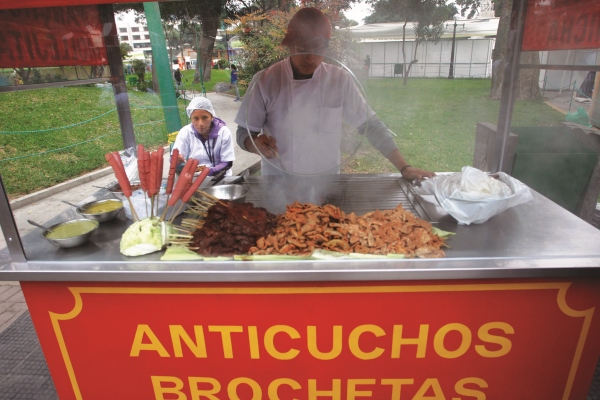Anticuchos are a bite-size introduction to Peru’s cuisine—and to its rich ethnic heritage. A blend of indigenous, Spanish and African influences, the popular Peruvian kebabs originated as an Incan delicacy made with llama meat cut into small pieces and spiced with local ají peppers and herbs. In colonial times, African slaves toiling in Peru’s mines and plantations turned anticuchos into a fast food served on bamboo sticks. Instead of llama meat, the Africans used the beef hearts that were discarded by their Spanish masters. The marinated snack offered at street carts in Peruvian cities today is typically seasoned with a blend of ají peppers, garlic, cumin, vinegar, salt and pepper.
Anticuchos are customarily sold alongside picarones, sweet Peruvian donuts, on the street as a “traditional combo,” says Conrado Falco, director of the Trade Commission of Peru in New York. “(People have) the spicy, meaty anticuchos first and then the sweet picarones.” But the snack has received a modern makeover. Acclaimed Peruvian chef Gastón Acurio has transformed the anticucho into the star of his Lima-based restaurant, Panchita. Discerning diners can choose varieties made from octopus, beef tenderloin or chicken livers— just to name a few. The dish could be the next big epicurean export from Peru, as sought after as ceviche and pisco sours. It’s now available everywhere from a Lima food court overlooking the Pacific to Peruvian restaurants in New York City. Best, of course, when followed by picarones.



